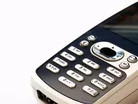Cameras on cell phones make handy diagnostic tools

Cameras on cell phones have proved to be a vital piece of medical equipment to doctors and healthcare workers who are based in remote and isolated locations, the Press Association news agency is reporting.
According to the results of a recent study, doctors can benefit from just a two megapixel mobile phone camera as it is able to capture clear microscopic images of infectious microorganisms.
The pictures can then be sent via email or SMS message to other doctors and specialists in hospitals and healthcare clinics around the world for a more thorough diagnosis and analysis.
The study, which was carried out in Uganda, concluded that the African continent was an ideal location for cell phone cameras to be used in this manner, as doctors are often working in remote, sparsely populated areas.
To read the latest edition of Healthcare Global, click here
- Alzheimer’s disease found five years earlier with new blood test
- Malaria death rate continues to fall across the world
- New ‘stalker clinic’ opened in UK is world’s first
During the research, images of a variety of bacteria were captured, including that of the malaria parasite.
In fact, the researchers said that in some cases, images of the malaria parasite gave the best diagnosis, as the images were of such a high quality “that specific stages of the malaria parasite could be identified.”
Samples of blood and urine were also sent for analysis via the cell phone images, as were pictures of the tuberculosis causing drugs.
Experts believe that using cameras on cell phones as a diagnostic tool will help to achieve a quicker diagnosis, meaning treatment would be more effective.
The study was led by Dr Coosje Tuijn from the Netherlands’ Royal Tropical Institute and the findings have been published in Public Library of Science ONE (PLoS ONE), an online journal.
“Poor and vulnerable populations are most affected by weak laboratory services because they carry the largest burden of ill health,” the authors said.
“Connecting mobile technology to diagnosis has a considerable potential to improve diagnostic services in resource-poor settings with widely distributed and remote clinical centres.”
They added: “This field study proves that the concept works and that there is a demand from the end user and great interest from other stakeholders.”
Our magazine is now available on the iPad. Click here to download it.



